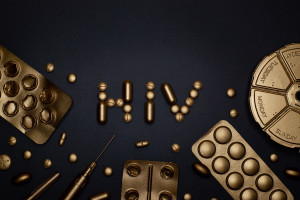
Copenhagen/Kyiv: In 2020, Ukraine had the second highest rate of newly diagnosed HIV infections in the WHO European Region – or 15% of all those diagnosed – as well as the highest rate of AIDS diagnoses that year. Over half of the new HIV diagnoses were attributed to heterosexual transmission, and 38% from injecting drug use.
An estimated 260 000 people are living with HIV in Ukraine. Prior to the war, over half, or nearly 150 000 people, were on life-saving antiretroviral (ARV) treatment, including more than 2700 children.
Disrupting, stopping or changing HIV treatment can lead to complications including drug resistance, posing a grave threat to a patient’s health and making the disease more difficult and expensive to treat.
To keep opportunistic infections such as tuberculosis (TB) at bay, continuous access to antiretroviral drugs (ARVs) is vital. This is in line with WHO’s strategy of tackling what is sometimes referred to as a dual epidemic; with TB being one of the leading causes of death in people infected with HIV.
Already the impact of the war has been devastating for Ukraine’s health system. As the number of people fleeing hostilities in Ukraine grows by the hour, currently at more than 4 million, so does the number of refugees in need of consistent access to appropriate medication regimens in host countries. The World Health Organization (WHO) advised refugee-hosting countries to support the provision of ARVs to continue treatment for people enrolled in therapy.
Moreover, due to the fact that men are the majority of those in need of ARVs, and that male Ukrainian citizens aged 18–60 are prevented from leaving the country, the main need for the drugs remains within the country’s borders. As of today, some 6.5 million people are internally displaced in Ukraine.
Faced with alarming reports of disrupted HIV treatments threatening the lives of thousands of people, World Health Organization (WHO), the United States President’s Emergency Plan for AIDS Relief (PEPFAR), Ukrainian authorities and partners ensured the procurement of 209 000 packs of the antiretroviral drug TLD (tenofovir, lamivudine and dolutegravir). This means that most of the needs of every single person known to be living with HIV in Ukraine will be met for the next 12 months. The first batch of the ARVs has crossed the Polish border into Ukraine and is about to be transported to HIV service facilities across the war-torn country.
Without the access to medicines they now have, the HIV patients would have been at grave risk. In addition to the highly efficient and cost-effective TLD (tenofovir, lamivudine and dolutegravir), about to be delivered to health facilities across Ukraine, a procurement of additional ARVs is ongoing. A donation of the HIV drug dolutegravir will also be available soon, to treat infants living with HIV.
“What made this possible in a matter of weeks – much faster than ever before – is the fact that everyone was aware of what was at stake: the looming threat of treatments cut short. Every actor involved did their utmost to prevent disrupted treatments or people forced to change medication, something that can lead to loss of life,” said Dr Jarno Habicht, WHO Representative in Ukraine.
HIV services, although still reeling from the impact of COVID-19, have shown remarkable resilience since the war started in late February.
On March 21, 2022, almost a month after the war erupted, only 36 out of 403 antiretroviral treatment sites in the country had shut their doors, while the majority were either fully or partially functioning. Amid the devastation in the city of Mariupol, an HIV-treatment centre remains open. Even in regions hugely impacted by hostilities, such as Chernihiv and Zaporizhia, services have continued.
A number of lessons learned from the pandemic have benefitted HIV services in past weeks – multi-month prescribing, drugs delivered by post and consultations by phone being just three examples of such good practice.
“Ensuring continued HIV treatment and sufficient stocks where people find temporary refuge – not only in terms of HIV but also in the context of other communicable and noncommunicable diseases – will be an ongoing challenge to humanitarian responders and Ukraine’s health system,” noted Dr Habicht. “WHO and partners will continue to do everything in our power to implement immediate and longer term measures to address Ukraine’s health emergency.”
– global bihari bureau





